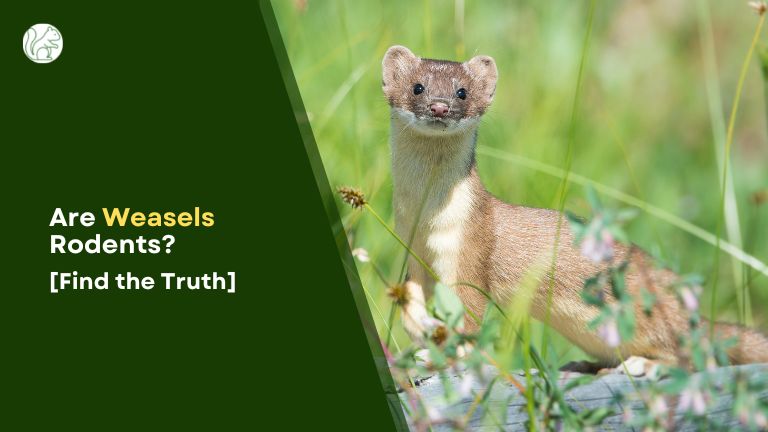A ferret-like animal moving in the backyard might give you a hint of a rodent but well, if that’s a weasel, don’t get confused! Weasels are found in North and South America, Asia, North Africa, and Europe now.
They love to live near the woodlands, grasslands just like the rodents squirrel, or beavers. But is a weasel a rodent or do they just look alike? The easy answer is, weasels are not rodents.
Yes, their furry small body can make it puzzling and that’s why we are here! Today, we will go through some details on why weasels are not rodents and what they actually are. Stay tuned!

Are Moles and Weasels Related to Rodents?
Despite their similar appearance, moles are not rodents. They are actually part of the mammal group called insectivores, closely related to shrews and hedgehogs. Weasels, on the other hand, belong to the Mustelidae family, which includes otters and ferrets. These animals have different evolutionary histories.
Is a Weasel a Rodent?
You have got the idea that though these are furry babies and might look similar to rodents, they are not rodents in real life. All the rodents belong to the Rodentia order, however, Weasels don’t.
These species belong to the order Carnivora and the family Mustelidae which are completely different from the Rodentia order. They are the natives of North America and South America. Also, they are seen in Europe and Asia.
Interestingly, you can find them in North Africa too. For them, the best place to live in the woodlands and grasslands. Marshes and moors are also on the list. Any urban area can be a place for wild weasels.
Their body color is red to brown but their bellies are white. With short legs with a long body shape, they are known as pests to a lot of homeowners.
Almost all rodents are considered pests. Weasel’s reputation as pests and their small size make people confuse them as rodents.
How are Weasels Different from Rodents?
Knowing if weasels are rodents or not isn’t enough. You must know why they are not rodents and what makes them different. Let’s take a look!
Order
As we have mentioned above, they belong to a completely different family. While all the rodents are from the Rodentia order, weasels are from the order Carnivora.
Rodentia is the largest order of mammals while Carnivora is the fifth-largest order of mammals. It consists of 280 different species. The only similarity between them is they both are mammals.
Diet
The diet of the rodents and a weasel is very different from each other. Yes, most rodents are herbivores and they feed on plants, nuts, veggies, seeds, etc.
On the contrary, a weasel is different in the sense that they are meat-eaters. They are carnivores and can’t feed on plants or seeds to stay alive.
Prey-Predator Relationship
As you already know that the diets of these animals are different, they have a prey-predator relationship.
We agree that a lot of the rodents are small and the same goes soft the weasels. But size doesn’t matter when it comes to food preference.
Rodents can’t eat a weasel as they are not meat-eaters. But a weasel can hunt down a rodent as its prey.
Defense Mechanism
Rodents, as they have got sharp claws and teeth, can simply scratch and bite their predator to safeguard themselves. However, for the weasel, things are different.
They release a foul-smelling secretion. This is released from their anal glands. They use this as their defense mechanism and at times, they mark their territories in this way.
Teeth
While rodents have incisors that grow continuously, weasels lack them. On the other hand, weasels have canine teeth that rodents lack. Their tooth placements are different.
A rod net needs to chew on things to keep the balance of its incisors but a weasel doesn’t need to do that. As weasels are carnivores, they use their canine to hunt, chew and eat meat.
Weasels have other teeth called the carnassial teeth. These work like blades for slicing through their prey.
Wrap Up
So, no matter how small a weasel looks, it can’t be close to rodents. They are very different from each other.
Their order and family, food habits and teeth, defense mechanism, and prey-predator relationship make them different. And for their nature, they are better kept in the wild instead of kept as pets.
